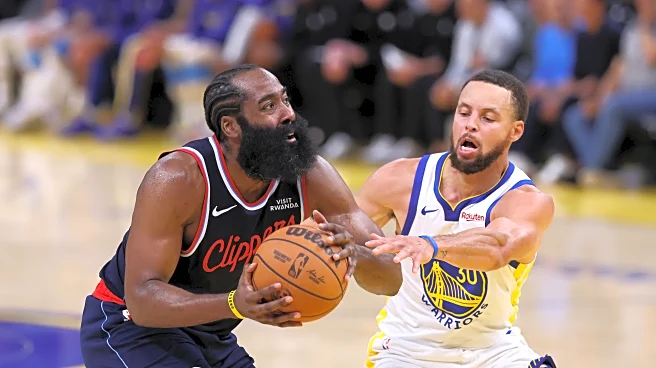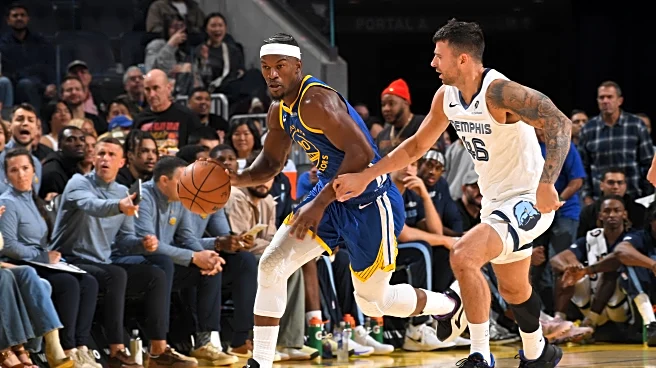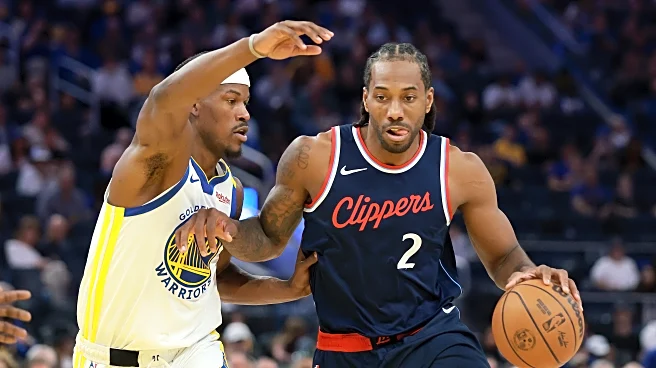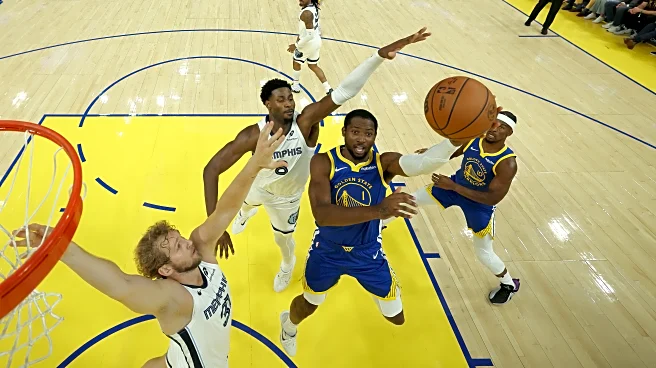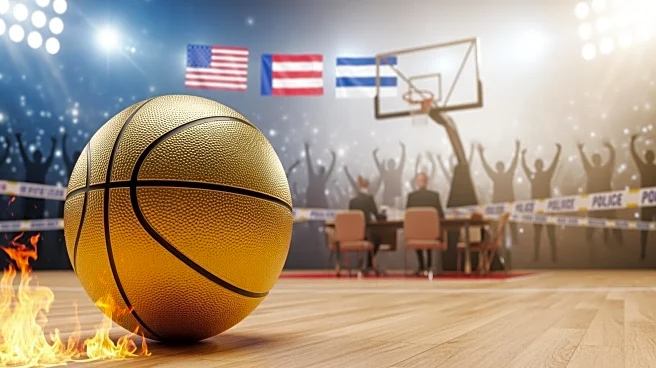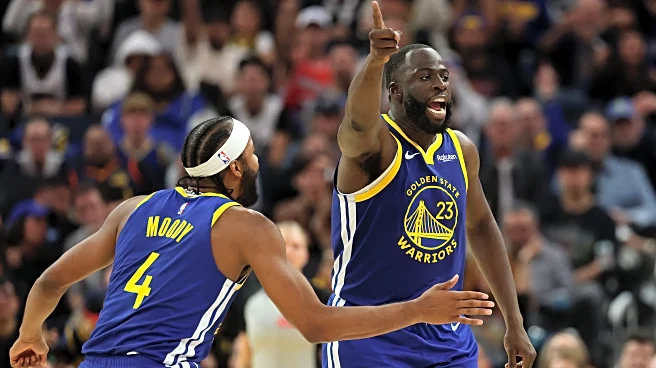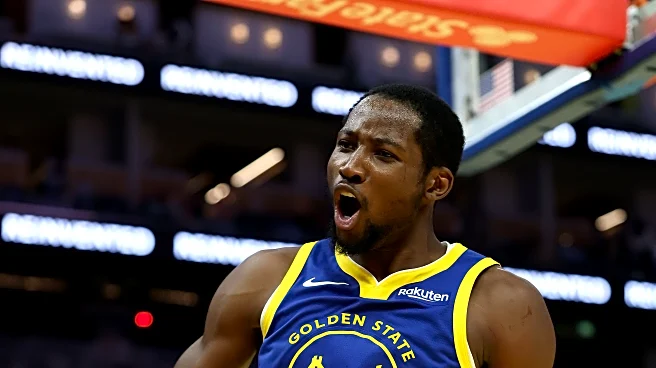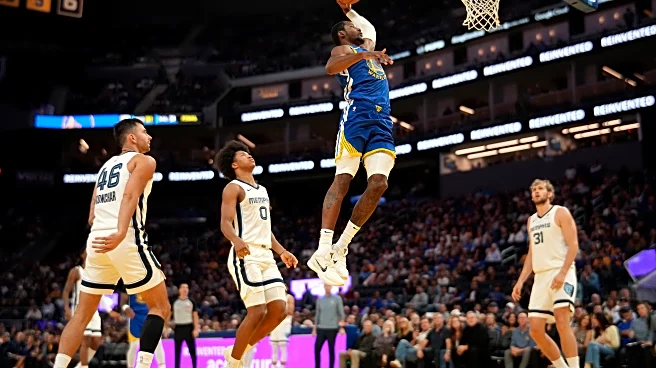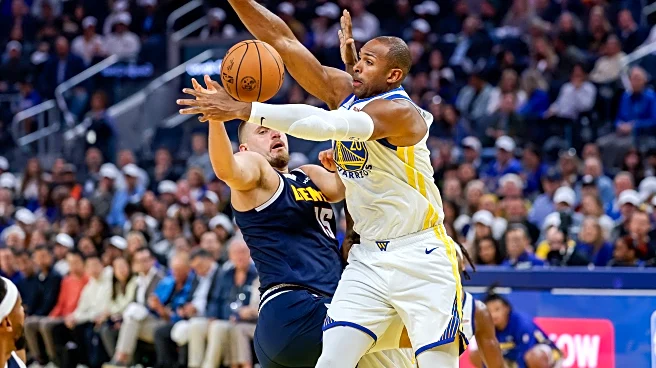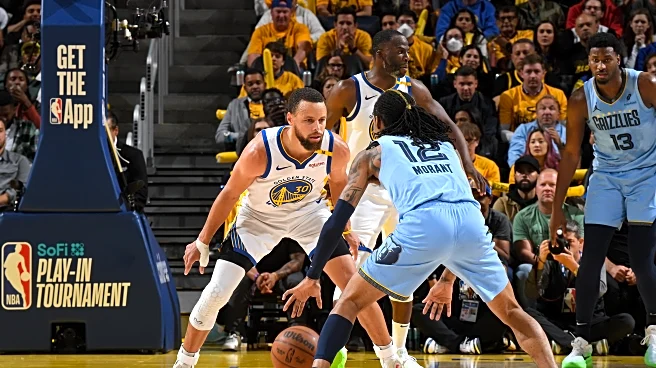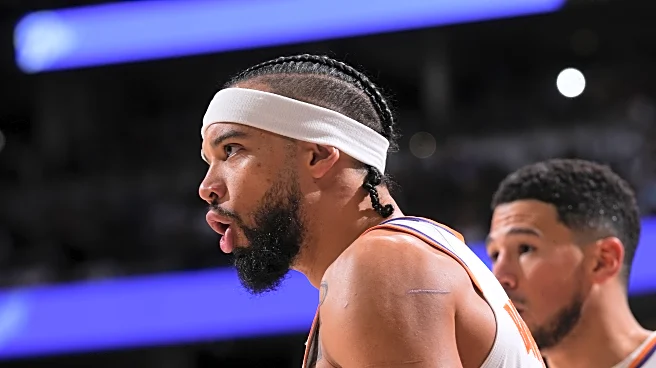When it seemed like the Golden State Warriors would maintain one of their patented hot starts against the Los Angeles Clippers, things quickly fell apart, mostly due to the exploits of an old nemesis in James
Harden. The Warriors possess arguably the greatest amount of institutional knowledge of how to “contain” Harden, data collected from their many battles with prime Harden and his time with the Houston Rockets. Even with that knowledge in hand, Harden was able to score 20 points in the first half, on 6-of-12 shooting and a perfect 7-of-7 at the free-throw line.
Known for his ability to control the tenor of a half-court possession, Harden was able to torch his one-on-one matchups in the first half. Whoever the Warriors had defending Harden were easily baited into making contact, while Harden was able to get shots up amidst the contact and get himself to the line for three-point opportunities.
Those opportunities were born out of missed opportunities to either keep him away from his strong hand altogether (his left), or mid-possession boo-boos during which Harden was somehow able to find a way to switch from his right to his left. In that regard, it is arguably more the quality of the player that creates that outcome more so than any mistake the defense makes. But that doesn’t mean there isn’t room to do much better.
When Gary Payton II picks up Harden in transition in the sequence below, he tries his best to “weak” Harden toward his right hand (“weak” being the name of the coverage that aims to shade a ball-handler toward his weak hand), with Al Horford ready to contain in his drop-back coverage and the sideline acting as a third inanimate defender.

While Brook Lopez’s flat-angled screen makes it somewhat difficult to navigate, Payton’s inability to anticipate the angled screen (and general lack of urgency to fight over it and recover toward Harden) puts all the pressure on Horford to stop Harden’s drive. Free of Payton’s pesky defense, Harden switches to his left and takes Horford all the way to the rim for a layup.
Moreover, the Warriors’ dwindling offensive attack to close the first half contributed to Harden’s surge. Basketball 101 states that an inability to create offense translates into an inability to properly set one’s defense. Scoring a measly 13 points in the second quarter allowed Harden to constantly catch the Warriors on the backfoot, giving him nigh-unlimited license to get to the rim and score with his left.
The inability to properly execute the scouting report, coupled with Harden’s general brilliance as a scorer, contributed to a 49-43 Clipper lead at the half. One can only assume that Steve Kerr was unhappy with how Harden was defended in the first half and made sure to pound the point of not letting Harden control the game with his left hand; instead, it should be the Warriors taking control of the game by taking away Harden’s left. If that was one of their mini-goals heading into the second half, it was one accomplished as perfectly as a defense could execute against one of NBA history’s deadliest offensive players.
Draymond Green knows the Harden scouting report as much as anyone not named Steph Curry. Once he finds himself matched up against Harden on the right side of the floor, he makes sure to position himself between the middle of the floor and the sideline — again, “weaking” Harden in an effort to coax a right-hand drive. With Jimmy Butler behind Green in help defense, Harden has much more difficulty making something out of nothing while driving to his less-preferred side.
As aforementioned, Curry is the other Warrior besides Green who has as much experience guarding Harden — and therefore, has a truckload of information stored in his mental databank of Harden’s preferences and tendencies. Contrary to popular belief, Curry being isolated against Harden isn’t that terrible of a matchup, and nowhere close to being a nightmare scenario, even if the Warriors would prefer to keep Curry out of isolation defense in an effort to preserve him for offense.
At this stage of their careers, Curry and Harden are more than familiar with each other. But Curry gets the one-up on Harden in the second half. Watch as he tries to deny Harden from driving to his left — moving his feet laterally to his right to cut off Harden’s attempt to do so — before timing a left-right cross perfectly and stripping the ball clean.
What gives the Warriors additional reassurance in leaving Curry perfectly alone to guard Harden is the knowledge that Curry will not only “weak” Harden to his right — it’s that Green will almost always be in a position to “trap the box” (i.e., step up from the weak side to help) and provide an extra layer of security.

With Butler ready to sink in against Ivica Zubac, Quinten Post ready to cover a pass to the strong-side corner, and Jonathan Kuminga splitting the difference on the weak side, Harden has no recourse. He goes up for what looks like a lob attempt to Zubac, but Green’s contest, coupled with Curry staying on his hips and Butler sinking in to take away Zubac’s ability to get to the lob, blows up the possession.
Such is the discomfort that Harden experiences whenever he has to make use of his right hand that the Warriors are even fine having Post switched onto him in the possession below, with Post making sure to corral Harden along the baseline, a stark difference from the first-half possession involving Payton and Horford. While Kuminga was — like Payton before him — victimized by a flat-angle screen, Post does an excellent job not letting Harden switch to his left hand. Green once again comes over to help, forcing a wayward pass from Harden that almost turns into a turnover.
Coupled with Kuminga and his high pick-up points that immediately put a modicum of pressure on Harden before the half-court mark, the Warriors were successful at wresting control from Harden’s clutches and living with shots they would rather give up — such as a Derrick Jones Jr. corner three, a shot opened by Brandin Podziemski tagging the roll and Harden once again being “weaked” toward his right.
Through the Warriors’ staunch efforts in keeping Harden away from his comfort zone, Harden was kept to a grand total of zero points scored and only three shot attempts in the second half. More importantly, he only recorded one assist the entire game — unusual for one of this era’s greatest passers and playmakers. Cutting off the Clippers’ main source of playmaking resulted in them having a total of 10 assists on 30 made field goals. No Clipper recorded more than 2 assists.
Even Kawhi Leonard fell victim to being “weaked” toward his weaker hand (his left). Take note of the coverage being shouted (presumably by Post) as Leonard receives a screen from Lopez. Moody promptly positions himself between Leonard and the screen to force Leonard toward his left:
This stands in stark contrast to when Curry was “weaked” toward his weaker hand (his left) during one possession, in which Post set a screen for Curry at the right elbow to receive the ball and subsequently set an angle ball-screen. Curry is denied away from the screen and toward the sideline, forced to use his left hand to dribble. But instead of rolling, Post — who tallied 12 points on 4-of-7 shooting on threes, the Warriors outscoring the Clippers by 34 points in his 24 minutes and 34 seconds of playing time, and making the most out of being Kerr’s chosen starting center — stays put beyond the arc, a counter to Curry being “weaked” and Zubac deciding to drop back in contain position.
After the game, it was Post who described in simple terms the key behind their defense on Harden.
“I thought we just had to be in the shell,” Post said. “Especially that Harden pick-and-roll, we tried to get him to his weak hand, try to make him make plays, don’t foul him on the three-point shot. I thought in the first half we fouled him a couple of times but besides that I thought we did a really good job.”
